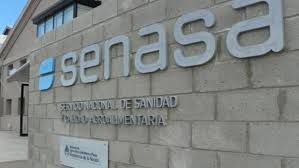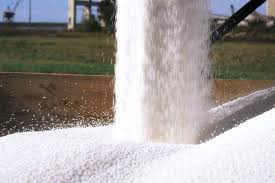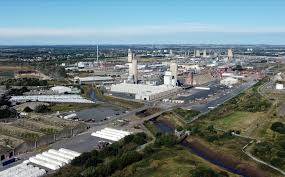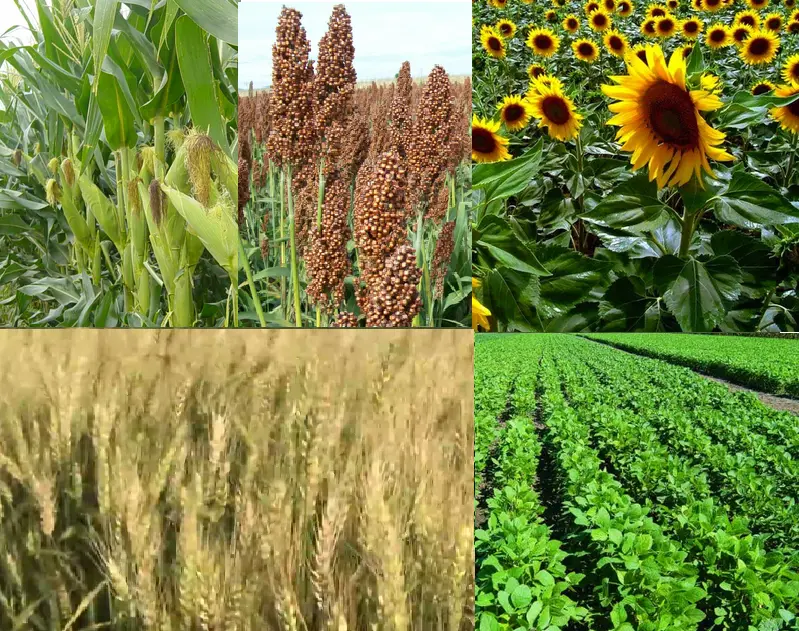
The traceability and certification system for fertilizers and amendments has been modernized and Senasa has simplified the processes in line with the new requirements of the agricultural sector and international regulations.
Senasa has established new regulations for the production, fractionation, distribution, import or export of fertilizers and amendments in the national territory. The measure aims to optimize the quality of products used in agriculture, reduce bureaucracy and facilitate integration with international markets.
Resolution 214/2025, published today in the Official Gazette, introduces simplified criteria for the registration and control of these inputs, while ensuring that they meet the safety standards required by current legislation. It also establishes new guidelines for the certification and traceability of products when they are placed on the market.

It also provides for automatic registration of products already registered in countries considered to have a high level of health surveillance and adds a provision for import notification of these inputs without the need for prior authorization.
These updates are in line with global traceability systems and place Senasa in a new registration paradigm that prioritizes self-management, the reduction of administrative barriers and the simplification of procedures. Work will continue to improve the regulatory framework to strengthen agricultural production and promote the responsible use of inputs, in line with the country’s health policy.
Source: TODOAGRO
CF Industries collaborates with JERA and Mitsui on a $4 billion low-carbon ammonia plant

CF Industries has announced a joint venture with JERA, Japan’s largest power generator, and trading giant Mitsui & Co to establish one of the world’s largest low-carbon ammonia production facilities, representing an investment of approximately $4 billion. The initiative aligns with the surge in clean energy projects spurred by significant climate change legislation introduced by former U.S. President Joe Biden in 2022.
This new facility will be built at the CF Industries’ Blue Point Complex in Louisiana and includes innovative features such as an autothermal reforming (ATR) ammonia production facility coupled with a CO2 dehydration and compression unit. This arrangement is designed to facilitate the transportation and sequestration of captured CO2, with Occidental’s carbon capture firm, 1PointFive, slated to handle these processes.
CF Industries projects that the production of low-carbon ammonia will commence in 2029. The facility is expected to have a yearly production capacity of 1.4 million tons, potentially making it the world’s largest ammonia production site by nameplate capacity. Each partner will contribute to the funding according to their stake in the joint venture and will off-take ammonia based on these proportions.

JERA, which is co-owned by Tokyo Electric Power and Chubu Electric Power, plans to offtake about 490,000 tons of ammonia, primarily for its Hekinan thermal power station in central Japan. The company has outlined plans to initiate commercial co-firing of 20% ammonia with coal at two Hekinan units by 2030, which will require roughly 1 million tons of ammonia annually.

The Japanese government is also stepping in to support the transition, as JERA officials highlighted expected price supports to cover the cost differential between ammonia and traditional coal for a span of 15 years. This policy is aimed at reducing Japan’s dependence on fossil fuels and boosting its energy security, considering the non-emissive nature of hydrogen and ammonia when burned.
Mitsui, known as Japan’s largest ammonia importer, anticipates a rise in demand from Europe due to tightening emissions regulations, according to company officials.

CF Industries will hold a 40% stake in the venture, with JERA at 35% and Mitsui at 25%. This project not only underscores the increasing global transition towards low-carbon energy solutions but also highlights the strategic collaborations across borders aimed at fostering significant environmental and economic impacts.
Source: Fertilizer Daily

MAIN ARGENTINE’ CROPS OVERVIEW:
SOYBEANS: Harvesting is beginning to be generalized at national level, although there are still delays due to lack of soil. So far, progress has been made on 2.6% of the national eligible area, with a delay of -8 p.p. compared to last year and -4 p.p. compared to the average of the last five seasons. The average weekly yield is 35.4 qq/ha, with soybean first in both cores averaging 37 qq/ha, exceeding expectations. Twenty-seven per cent of the second soya beans are filling grain, especially in the south of the agricultural area where the mild conditions of this autumn have favored this stage. In the north of La Pampa – west of Buenos Aires – the frost has affected the lots differently, with some having completed grain filling and others still in the process, whose damage will be assessed in the coming days. Under this scenario, the production forecast remains at 48.6 MTn.
CORN: After a week-on-week increase of 2.8 p.p., the grain maize harvest covers 23.1% of the national area and is 8.1 p.p. higher than a year ago. The national average yield is 83.3 q/ha, bringing cumulative production to 13.6 MTn. The slow progress recorded in the last two weeks is mainly due to the wet environmental conditions and the rains that occurred in a large part of the agricultural centre. In addition, in the western part of the province of Buenos Aires, harvest progress is being hampered by waterlogged areas. On the other hand, as with soybeans, frost has reached parcels from R4 to R5, so some negative impact on grain weight is to be expected. In this context, the production projection remains unchanged at 49 million tonnes.
SUNFLOWER: The sunflower harvest continues to progress and already covers 87.6% of the suitable area, after a progress of 12 p.p. between weeks. The national average yield remains above 23 qq/ha, allowing the production forecast to be maintained at 4.5 MTn. During the last week, significant progress has been made in the Central Buenos Aires and Southwest Buenos Aires – South of La Pampa regions, in many cases on plots that are still wet and with soil problems, prioritizing the good condition of the crop and the results obtained, which continue to exceed historical averages. In the south-east of Buenos Aires, work has been delayed in some areas, but the results are encouraging.
SORGHUM: Crop During the last two weeks, the sorghum harvest progressed by only 2.5 p.p., reaching 18.9% of the estimated area at national level. After the dry summer period and with the arrival of the rains, many lots began to resprout, producing panicles at different phenological stages. This situation makes harvesting difficult and has led to the use of herbicides to speed up crop drying. In terms of yield, the Centre-North of Cordoba and the Northern Nucleus recorded the best results, with averages of 60 and 52.9 qq/Ha respectively. On the other hand, as we have reported, yields in the NEA are expected to be close to 20 qq/ha, accompanied by significant area losses. In this context, the production forecast is 3 MTn.
Source: Buenos Aires Grain Stock

